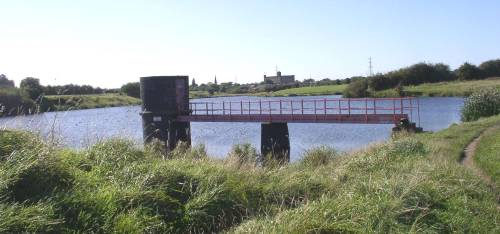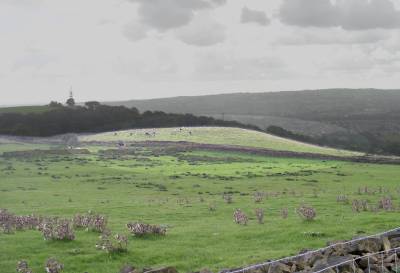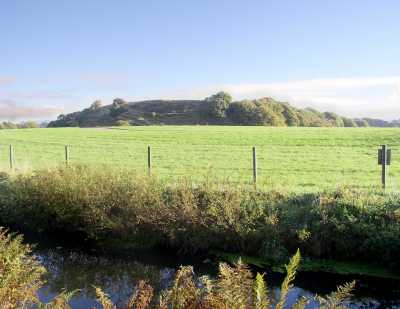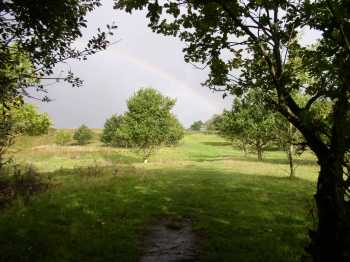Brief History of Bury - Page 1
Prehistory
Flint tools have been discovered in the Irwell valley area dating from the Mesolithic (middle stone age) period, 8000 to 4000 BC. It is likely there were only temporary camps rather than permanent settlements at this time.
Settled communities began to appear in the Neolithic (new stone age) and Early Bronze Age periods, circa 2500 BC, and there is evidence of a communal site near the present-day Withins reservoir in Radcliffe.

Withins Reservoir
A Bronze Age cairn exists at Whitelow Hill in Ramsbottom, and Castlesteads, just north of Bury, is the site of an Iron Age promontory fort which was in use from 200 BC to 250 AD.

Whitelow hill (centre of picture)

Castlesteads fort was on the summit of this rise, overlooking the Irwell.
Roman and Saxon Times
The Roman occupation of Britain seems to have had little impact on the immediate area of Bury, although part of Watling Street, one of the main Roman roads, runs through nearby Affetside.

Part of the route of Watling Street, behind Lowercroft Road at Starling.
Many local place names are of Saxon origin, e.g. Bury was originally 'Biri', meaning a fortification, and Ainsworth was originally something like 'Einulf's worth' (worth=farm). However there is a dearth of archaeological or written evidence from this period of Bury's history.



